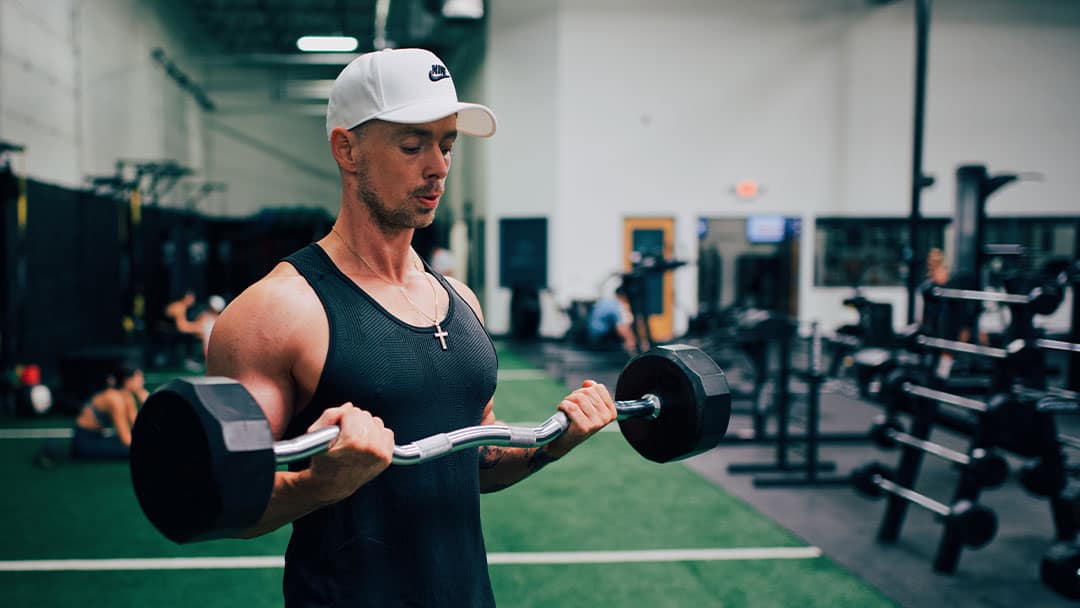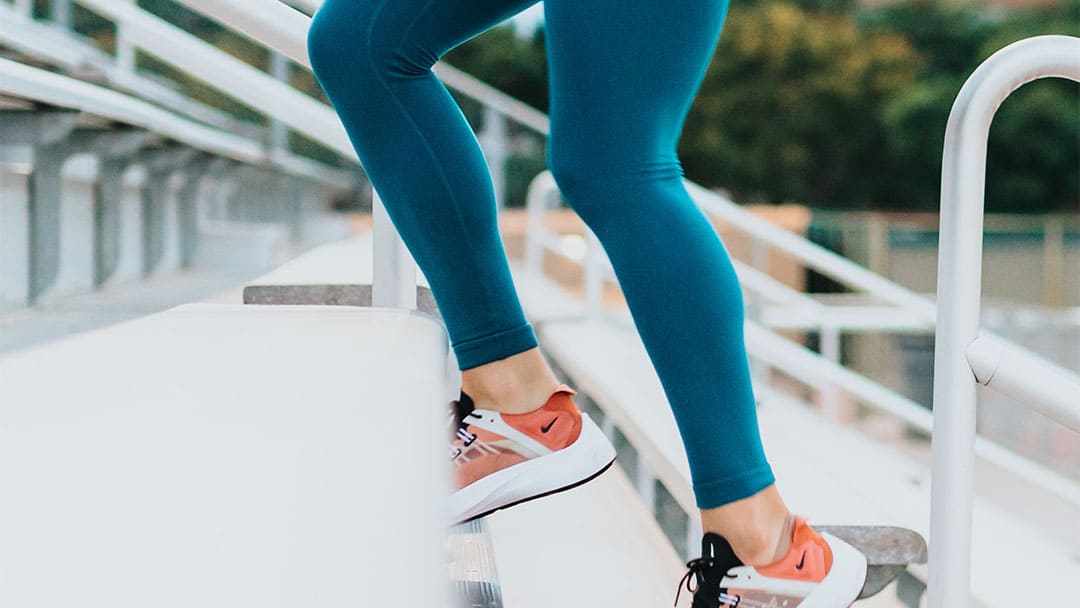Working out provides excellent health benefits, but sometimes the soreness that follows can become problematic. Delayed-Onset Muscle Soreness (or DOMS) is the pain you feel following a workout, and it can make straightening your arms after exercising your upper body quite tricky. Fortunately, you can implement remedies to improve performance and decrease pain and muscle stiffness. Keep reading to learn why arms can be difficult to straighten after a workout and what to do if and when arm soreness strikes. We’ll also cover how to prepare in advance to prevent arm straightening difficulties from occurring after a workout.
Why Arms Can Be Difficult to Straighten After a Workout
DOMS typically occurs during the eccentric phase of a movement, meaning when the muscle is lengthened. However, eccentric muscle contraction involves a muscle being lengthened while also producing tension, and the biceps are one of the muscle groups that experience this form of movement. As a result, when you work out the biceps — particularly when new to working out the biceps or when deploying a new exercise or technique to impact the biceps, the tension can become too tight and make straightening your arms very difficult.
What to Do If You’re Struggling to Straighten Your Arms After a Workout
The key to straightening your arms is to relax your muscles, which can be accomplished by stretching out the biceps following your workout. It may take several stretching sessions, but you’ll eventually be able to relax your muscle group and straighten your arms. In conjunction with stretching the biceps, working out the triceps can also help you straighten your arms. Focus on tricep extension exercises which can help alleviate soreness in the biceps, allowing you to straighten your arms.
Another remedy to consider is a muscle rub that can help reduce tension in your biceps. Muscle Rubs like the Hemp Muscle Rub available from Herbal Ice can help get the job done naturally and aid in your muscle recovery. Hemp studies suggest muscle rubs may act as anti-inflammatories, providing relief and stress relief following any workout. You don’t just have to use the rubs on your biceps — they should be able to work on calves, hamstrings, glutes, and back muscles, too. Other remedies, including gentle stretching, muscle massage, ice, and heat, have been known to help, too.

How to Prepare for a Workout to Prevent Arm Straightening Difficulties Following a Workout
Preparation before and after a workout can help prevent or minimize muscle soreness when it strikes. Take the following steps to keep your arms moving after a biceps workout.
Want to learn more about time-tested pain relief? Visit Herbal Ice today to learn more!
Hydrate
Dehydration is not conducive to muscle recovery. It would help if you had fluids to help flush damaged muscle tissue, which is vital to preventing soreness or shortening the experience when it occurs. Drink 8 ounces of water for every 15 to 30 minutes of exercise for the best benefits.
Warm-Up
10 to 15 minutes of muscle stretching followed by simple aerobic exercise before a workout can help ensure your post-workout is light on pain and heavy on results. Ensuring you’re getting good blood flow to the muscles you’ll be training that day will benefit both you and your body. Your muscles will feel warm to the touch, especially in cold weather, and will be primed for re-building post-workout. It’s also an excellent strategy for preventing injury.
Cooldown
Like warming up before a workout is essential, so is cooling down after. Taking time to slow down your training rather than stopping abruptly can help prevent fluid pooling in the joints and muscles. Reversing the order of your warm-up can prove a beneficial cooldown exercise and will help your breathing return to normal following a heart-pumping workout.
Eat Right
Your body requires protein to repair its muscles, healthy fats to lubricate your joints, and carbohydrates to fuel your body and workouts. Therefore, it’s important to eat both before and after a workout.
Keeping Moving
Exercise may seem like a bad idea when your stiff muscles are already suffering. However, plenty of research indicates light activity can help keep the blood circulating and speed up the body’s ability to drain chemicals and waste linked to muscle aches.
Massage
Get yourself a rubdown to help release muscle tightness. Working through the knots in your body can help the muscles relax while increasing blood flow to the areas that hurt the most. Massage with muscle rubs can also push pooled fluid out of the body, speeding up the recovery process.
Foam Roller
A foam roller is a cheap way to give yourself a deep tissue massage by increasing blood flow to your muscles through applied pressure. By slowly rolling over tension areas, you can aid the tight muscles by releasing tension and speeding up the recovery and healing process. Following your workout, dedicate 10 to 15 minutes using the foam roller before doing your stretching exercises. With the muscles more relaxed, your stretches will be fuller and deeper, aiding in the prevention of DOMS.
Can’t get enough of hemp products and herbal remedies? Contact Herbal Ice to learn more about how hemp can benefit you!
Tips to Look Out For
It’s important to understand that DOMS typically kicks in 2-3 days following a workout, so if you start feeling soreness during or immediately after working out, it could be a sign your pain is being caused by something more serious. You may have strained tendons, causing bicep tendonitis. If this occurs, try icing the area, using inflammatories, and alternating to the lower body to give your upper body rest. If symptoms of muscle pain persist, be sure to visit a doctor.
Final Thoughts on Arm Sorness
Whether it’s topical hemp muscle rub from Herbal Ice or deep stretches to increase blood flow, preventing soreness in your arms is doable. Don’t let your workout keep you down for days and be unable to straighten your arms when relief can be just a few clicks or stretches away.



